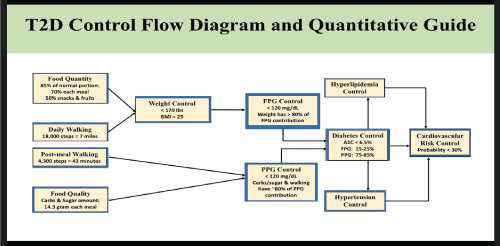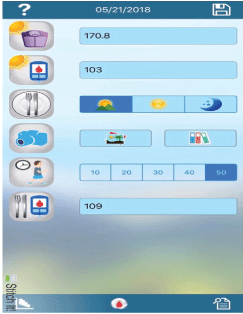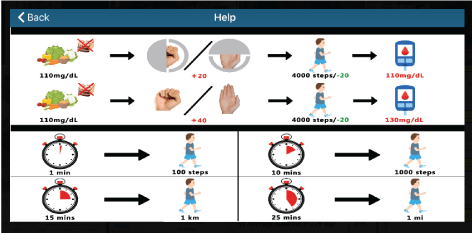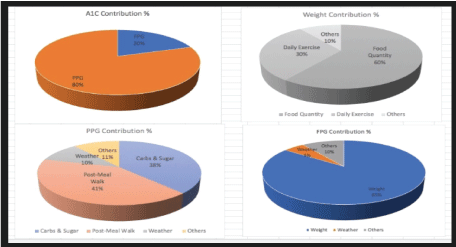Type 2 Diabetes Nursing Management Based on GH-Method: Math-Physical Medicine
Gerald C. Hsu1*
1eclaireMD Foundation, USA.
*Corresponding Author: Gerald C. Hsu, eclaireMD Foundation, California, USA, Tel: +1 501-331-5000; Fax: +1 501-331-5000; E-mail:g.hsu@eclairemd.com
Citation: Gerald C. Hsu(2020) Type 2 Diabetes Nursing Management Based on GH-Method: Math-Physical Medicine.J Nursing Palliat serv 4: 109.
Copyright: © 2020 Gerald C. Hsu, et al. This is an open-access article distributed under the terms of the Creative Commons Attribution License, which permits unrestricted use, distribution, and reproduction in any medium, provided the original author and source are credited.
Received: April 21, 2020; Accepted: April 28, 2020; Published: April 30, 2020.
Introduction
This paper is written like a “recipe book” format based on the research work of ~1.5M medical and lifestyle data from a type 2 diabetes (T2D) patient from 1/1/2012-12/31/2018. The dataset is provided by the author, who uses his own type 2 diabetes metabolic conditions control, as a case study via the “math-physical medicine” approach of a non-traditional methodology in medical research. Math-physical medicine (MPM) starts with the observation of the human body’s physical phenomena (not biological or chemical characteristics), collecting elements of the disease related data (preferring big data), utilizing applicable engineering modeling techniques, developing appropriate mathematical equations (not just statistical analysis), and finally predicting the direction of the development and control mechanism of the disease.
Background
Here are the four main challenges in T2D nursing management: (1) Awareness and Knowledge, (2) Glucose Measurement, (3) Will Power and Persistence, (4) Technology and Tool.
Results
Highlights from the Flow Diagram in Figure 1:
Figure 1: Flow Diagram of T2D Control

Figure 2: AI Glucometer for FPG & PPG Predictions.

Figure 3: A Practical Guide for Food and Exercise.

Figure 4: Element Contribution % of Weight, FPG, PPG, A1C.

(1) Weight, BMI, Waistline - Weight from 220 lbs. to 171 lbs. BMI from 32.1 to 25.0. Waistline from 44” to 34” Controlling factors are meal portion (85% of a normal portion) and daily walk (18,000 steps, ~7 miles/day) [1].
(2) FPG (20%-25% of A1C) - FPG from 189 to 114 mg/dL. Weight contributes 80%-85% of FPG. “1.0 lbs. weight = ~1.5 mg/dL FPG” [2].
(3) PPG (75%-80% of A1C) - PPG from 380 to 117 mg/dL. Carbs/Sugar intake (14-15 gram/meal) contributes 38% and post-meal walking (4,300 steps) contribute 41% of PPG. “1.0-gram carbs/sugar = ~1.8 mg/dL PPG. 1,000 steps post-meal walk = ~5-10 mg/dL PPG” [3].
(4) Daily Glucose and A1C - Daily glucose from 280 to 116 mg/dL. A1C from 10.0% to 6.5% [4].
(5) Blood Pressure and Lipids - SBP/DBP from 250/107 to 105/65. Hyperlipidemia and hypertension are under control [5].
(6) Risk of heart attack or stroke - Risk from 74% in 2000 to 27.4% in 2017 (suffered three cardiac episodes 2001-2006).
Conclusion
This paper provides guidance on nursing management for T2D. By using the author’s created AI-based Glucometer, it may help patients to overcome obstacles with their disease control.
References
- Hsu Gerald C (2018) Using Math-Physical Medicine to Control T2D via Metabolism Monitoring and Glucose Predictions. Journal of Endocrinology and Diabetes, 1: 1-6.
- Hsu Gerald C (2018) Using Math-Physical Medicine to Analyze Metabolism and Improve Health Conditions. Video presented at the meeting of the 3rd International Conference on Endocrinology and Metabolic Syndrome 2018, Amsterdam, Netherlands.
- Hsu Gerald C (2018) Using Signal Processing Techniques to Predict PPG for T2D. International Journal of Diabetes & Metabolic Disorders 3: 1-3.
- Hsu Gerald C (2018) Using Math-Physical Medicine and Artificial Intelligence Technology to Manage Lifestyle and Control Metabolic Conditions of T2D. International Journal of Diabetes & Its Complications 2: 1-7.
- Hsu Gerald C (2018) A Clinic Case of Using Math-Physical Medicine to Study the Probability of Having a Heart Attack or Stroke Based on Combination of Metabolic Conditions, Lifestyle, and Metabolism Index. Journal of Clinical Review & Case Reports3: 1-2.
